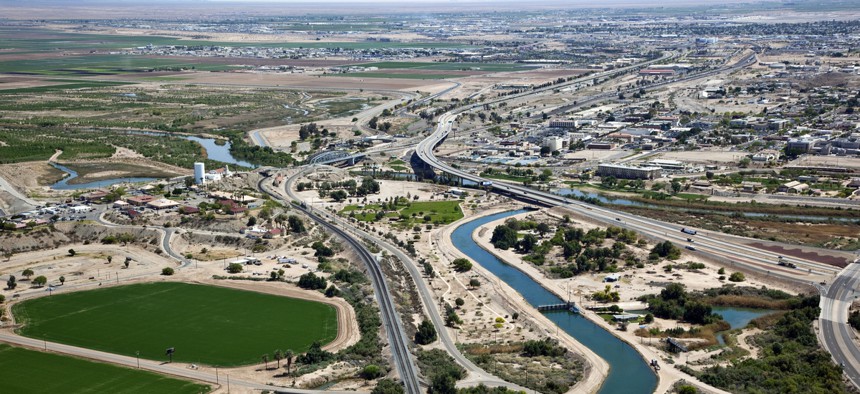Yuma Hopes to Rebound After Deadly E. Coli Outbreak

Looking toward Yuma, Arizona from California Shutterstock

Connecting state and local government leaders
The romaine lettuce crisis may be officially over, but this agriculturally rich area has taken a big economic hit.
This spring, public health officials urged consumers across the nation to ditch romaine lettuce grown in a very specific area: Yuma, Arizona.
Located along Interstate 8 roughly halfway between San Diego and Tucson near the U.S.-Mexico border, Yuma is the hub of an agriculturally rich area whose local farms were put under the microscope to determine the source of a deadly E. coli outbreak that infected 210 people in 36 states. Five people died and 27 suffered a type of kidney failure.
The geographic specificity of the public health warning prompted many salad lovers to look closely at packaging for the name of a city that most Americans probably know better from national weather forecasts for triple-digit temperatures.
In an update last week, the U.S. Centers for Disease Control and Prevention said that it had determined the likely source of the outbreak: a contaminated canal in the Yuma area that’s adjacent to fields growing romaine lettuce.

With that determination, federal authorities officially declared the outbreak of E.coli O157:H7 strain over. That’s the good news for salad lovers, lettuce growers and for this corner of southwestern Arizona overall. One in five jobs in Yuma County are tied to agriculture, where most of the nation’s leafy greens are grown during the winter.
The bad news for Yuma? The local economic damage will likely linger for awhile, perhaps for as long as two years.
As Cronkite News recently reported, Yuma-area lettuce growers have been struggling. “Romaine lettuce is definitely still in the doldrums,” Matt McGuire, general manager of JV Farms, told the news service. “The demand is still low and it’s still being sold from 25 percent to 40 percent of its normal volumes.”
Nationally, lettuce sales took a big hit this spring in the wake of truck loads of romaine being dumped and consumers turning away from leafy greens, The Wall Street Journal reported in May.
For Yuma-area agricultural producers, there are also longer reputational damages to recover from, too—guilt by association for farmers like McGuire, whose farm wasn’t linked to the E. coli outbreak.
“We don’t grow food to make people sick, and when something like this happens, it is disheartening because all farmers pride themselves on product safety,” McGuire told Cronkite News.
Lettuce harvesting in Yuma starts again in November.
Michael Grass is Executive Editor of Government Executive’s Route Fifty and is based in Seattle.

NEXT STORY: July Brings New Minimum Wage Hikes for Some U.S. Cities and States





